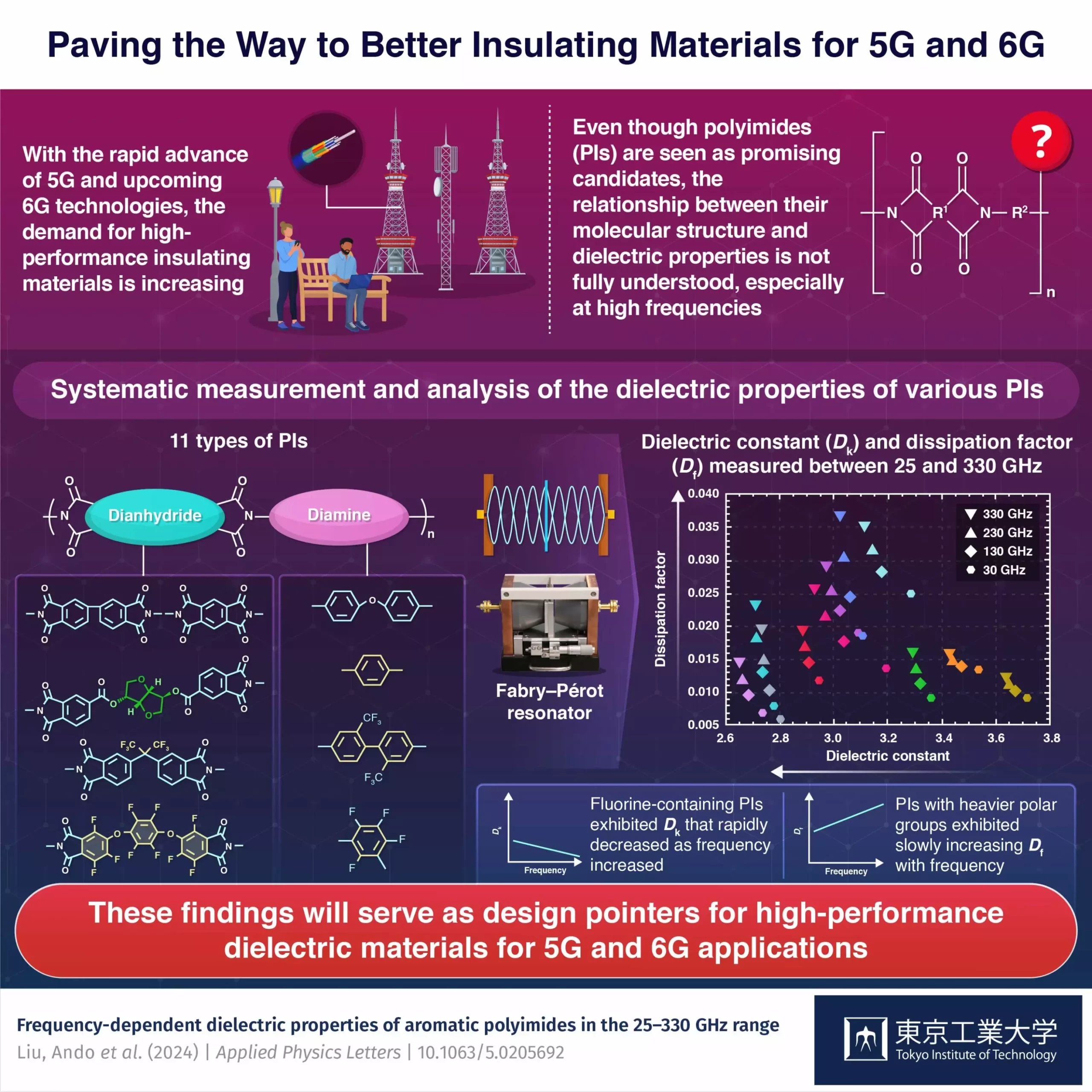As the development of 5G technologies progresses and the anticipation for 6G grows, the challenges associated with operating at extremely high frequencies become more apparent. Issues such as signal attenuation and interference are amplified as frequencies approach the terahertz range. This poses a significant obstacle for wireless communication systems, as maintaining signal integrity becomes increasingly difficult under these conditions.
One way to address the challenges of high-frequency operation is through the use of insulating materials with exceptional dielectric properties. Traditionally, glass- and ceramic-based materials have been favored for their performance in this area. However, their high cost and complexity of fabrication make them less than ideal for mass-produced devices, which are essential for widespread adoption in advanced 6G technologies.
In light of the limitations of current insulating materials, researchers are turning their attention to polymeric materials as a potential alternative. A study conducted by a research team from the Tokyo Institute of Technology focused on polyimides (PIs) and their suitability for high-frequency operation. Led by Professor Shinji Ando, the team’s research, published in Applied Physics Letters, aimed to investigate the dielectric properties of various PIs with different molecular structures.
Using a Fabry–Pérot resonator, the researchers were able to measure the dielectric properties of 11 different PIs in the 110–330 GHz range. The results indicated that PIs with higher fluorine content exhibited lower dielectric constant (Dk) values, which are crucial for minimizing signal loss and maintaining signal integrity at high frequencies. Additionally, the study found that the dissipation factor (Df) of PIs was negatively correlated with the polar fraction of the polymer, revealing valuable insights into the relationship between molecular structure and dielectric properties.
The findings of this study have significant implications for the development of high-performance polymer-based insulating materials for future 6G technologies. By gaining a better understanding of the dielectric qualities of PIs, engineers may be able to design more efficient and reliable telecommunications systems that can operate in the terahertz range. Further research, including spectroscopic studies in the THz range, will be essential for identifying the most suitable types of PIs for these applications.
Looking Towards the Future
While the study represents a valuable step forward in the research of polymeric materials for high-frequency operation, more work is needed to fully realize the potential of PIs in 6G technologies. By continuing to explore the relationship between molecular structure and dielectric properties, researchers hope to unlock new possibilities for faster and more reliable wireless communications systems in the future. Professor Ando and his team remain optimistic about the prospects of polymer-based insulating materials and their role in shaping the next generation of telecommunications technologies.


Leave a Reply